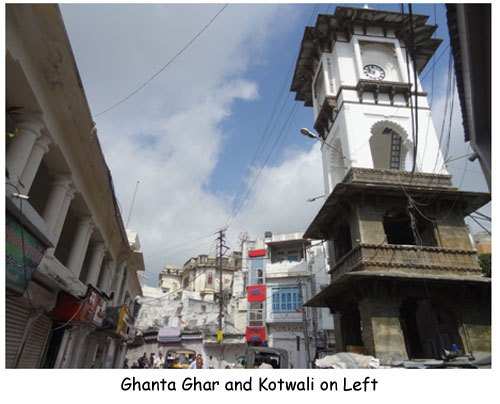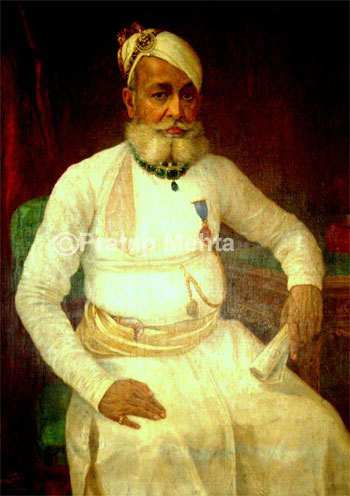History of Ghanta Ghar – symbol of communal harmony
In 1887, there was a street fight, with bricks and batons, between Mahajans (Baniya) and Bohras (a Muslim sect), over taking a male goat through Maldas street for sacrifice. Pradhan Rai Pannalal Mehta immediately called for a company of Military to control the people of two communities.
 In 1887, there was a street fight, with bricks and batons, between Mahajans (Baniya) and Bohras (a Muslim sect), over taking a male goat through Maldas street for sacrifice. Pradhan Rai Pannalal Mehta immediately called for a company of Military to control the people of two communities. Thereafter, the British Resident Lt Col Walter, conducted the enquiry and fined Rupees 5000 to each community.
In 1887, there was a street fight, with bricks and batons, between Mahajans (Baniya) and Bohras (a Muslim sect), over taking a male goat through Maldas street for sacrifice. Pradhan Rai Pannalal Mehta immediately called for a company of Military to control the people of two communities. Thereafter, the British Resident Lt Col Walter, conducted the enquiry and fined Rupees 5000 to each community.

Pradhan proposed to Maharana Fateh Singh that a Ghanta Ghar (Clock Tower) be made in front of Kotwali (police station) in the city, to symbolise the harmony between Mahajans and Bohras. The fine so collected was also added towards grant from Durbar. It stands tall even today, with Kotwali in the background.
Rai Pannalal Mehta served as Pradhan of Mewar state from 1869 to 1894. Various important administrative reforms in the Mewar State, such as land reforms, revenue settlement, sati-pratha act, salt trade agreement, reconstitution of state council, etc, were carried under his guidance and leadership.
Article written By Commander Pratap Singh Mehta, Veteran, Indian Navy
To join us on Facebook Click Here and Subscribe to UdaipurTimes Broadcast channels on GoogleNews | Telegram | Signal


